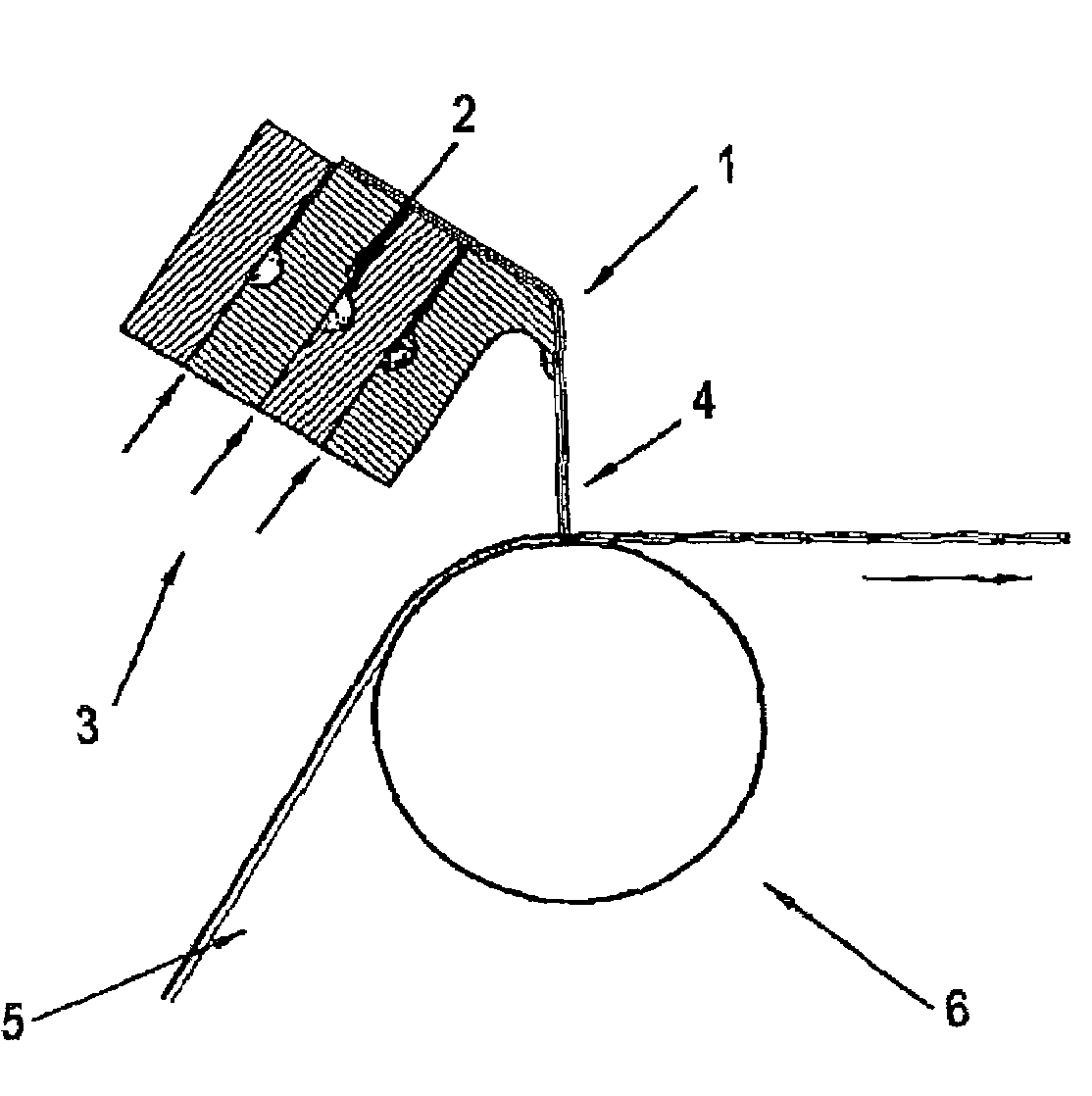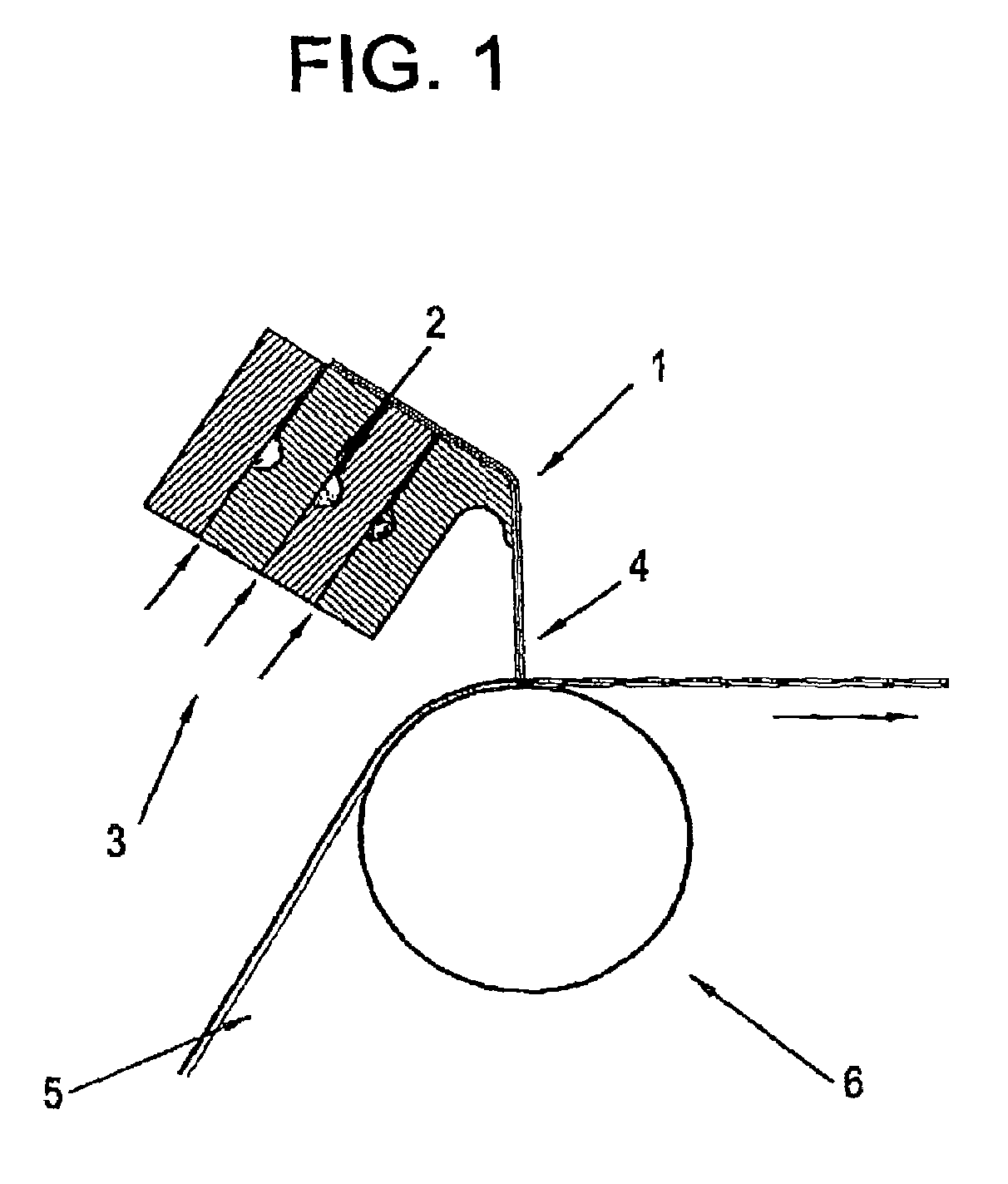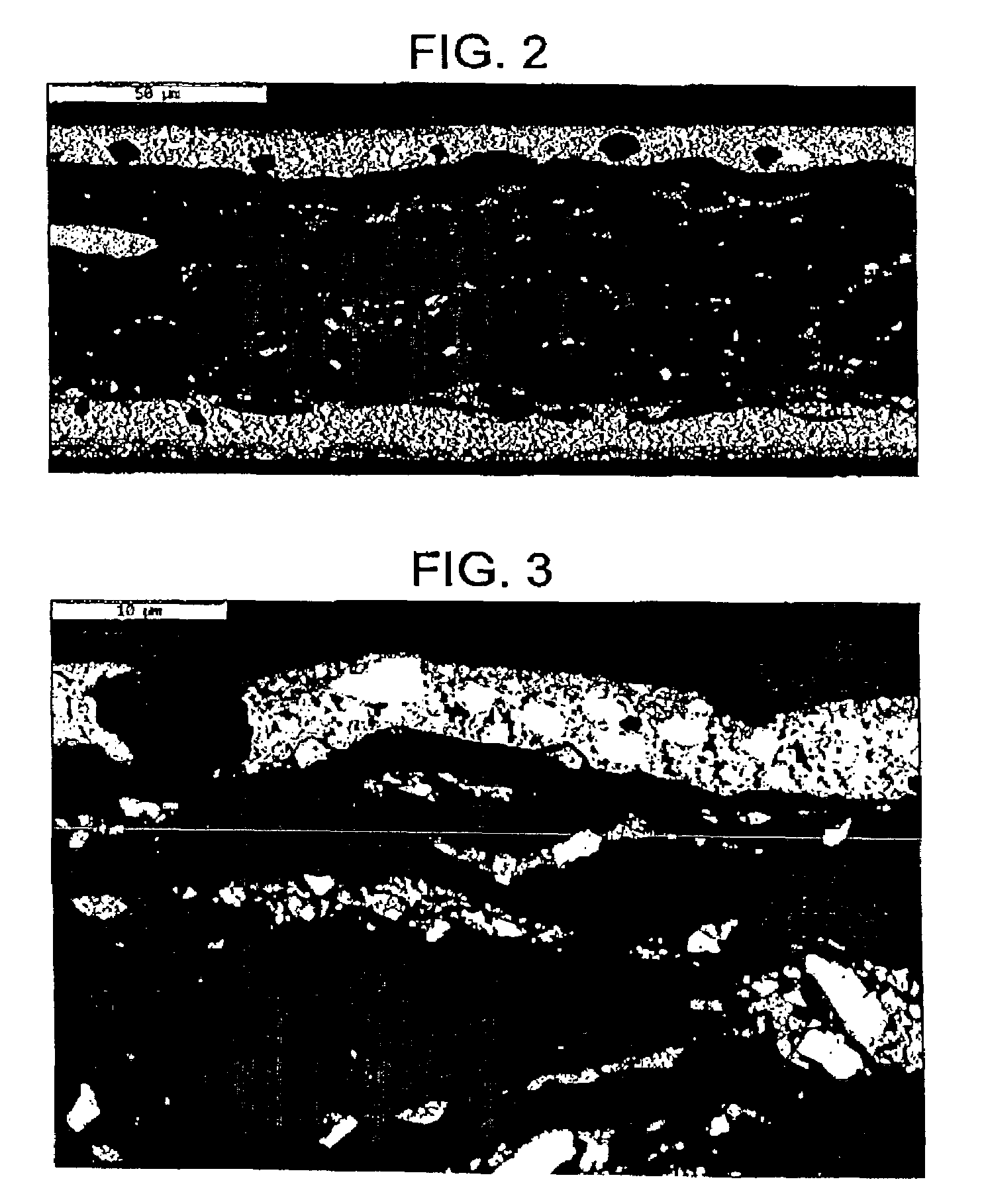Process for making multilayer coated paper or paperboard
a technology of coated paper and paperboard, applied in papermaking, transportation and packaging, non-fibrous pulp addition, etc., can solve the problems of affecting the quality of coated paper or paperboard
- Summary
- Abstract
- Description
- Claims
- Application Information
AI Technical Summary
Problems solved by technology
Method used
Image
Examples
example 1
[0110]The same bottom layer and top layer formulations used in Comparative Experiment 1 were applied via simultaneous multilayer curtain coating to the topside of the basepaper such that each coating layer had a coat weight of 10±0.2 g / m2. Drying was conducted using conditions as in Comparative Experiment A.
examples 2 and 3
[0115]To determine whether a lightweight-coated (LWC) paper could be produced by simultaneous multilayer coating, a wood-containing basepaper (46 g / m2, PPS roughness=7.9 μm) was coated in two trials such that the total coat weight applied was similar to that which could be applied in conventional single-layer blade or curtain coating processes. Coating speed was 800 m / min. The effect of increasing the relatively less expensive undercoat coat weight and decreasing the relatively more expensive topcoat coat weight on coated paper properties was examined by varying the ratio of undercoat coat weight to topcoat coat weight, but with the total coat weight remaining constant.
example 2
[0116]Bottom layer Formulation 2 and top layer Formulation 19 were applied simultaneously to a continuous web of the basepaper such that each coating layer had a coat weight of 6.5±0.1 g / m2. The coated paper was dried using similar drying conditions to those used in Example 1.
PUM
| Property | Measurement | Unit |
|---|---|---|
| surface roughness | aaaaa | aaaaa |
| speeds | aaaaa | aaaaa |
| glass transition temperature | aaaaa | aaaaa |
Abstract
Description
Claims
Application Information
 Login to View More
Login to View More - R&D
- Intellectual Property
- Life Sciences
- Materials
- Tech Scout
- Unparalleled Data Quality
- Higher Quality Content
- 60% Fewer Hallucinations
Browse by: Latest US Patents, China's latest patents, Technical Efficacy Thesaurus, Application Domain, Technology Topic, Popular Technical Reports.
© 2025 PatSnap. All rights reserved.Legal|Privacy policy|Modern Slavery Act Transparency Statement|Sitemap|About US| Contact US: help@patsnap.com



